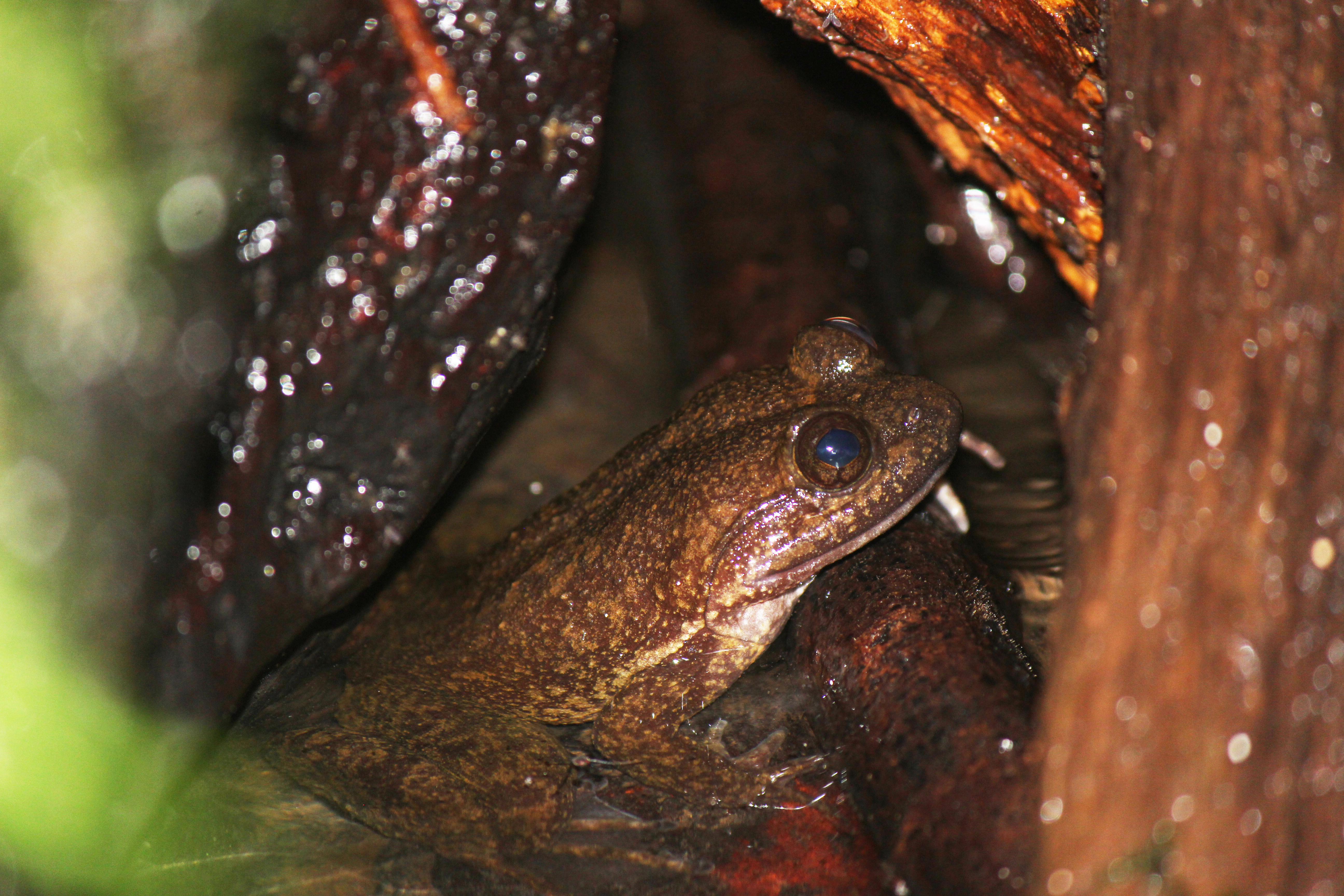In his recent book, Half Earth: Our Planet’s Fight for Life, acclaimed biologist and author E.O. Wilson lists Ghana’s Atewa Forest as one of the 38 most important places on Earth that should be set aside for nature’s benefit. The forest is teeming with life, home to at least 50 mammal species, more than 1,000 species of plants, at least 230 species of birds, and a number of amphibians, including the Togo Slippery Frog, found nowhere else in the world. Atewa’s impressive biodiversity has earned it the designation of a Key Biodiversity Area, a site of global importance to the planet’s overall health.
For these reasons, Global Wildlife Conservation and the Amphibian Survival Alliance, as part of the Key Biodiversity Area Partnership, sent a letter to Ghana President Nana Addo Dankwa Akufo Addo asking him to establish Atewa as a national park, forever protecting it from the looming threat of bauxite mining. Bauxite is the chief ingredient in aluminum and sits beneath the forest floor—mining it would require tearing up the forest and leaving it permanently barren. Nearly 130,000 individuals have also signed a petition calling for Atewa Forest to be designated a national park.
The Togo Slippery Frog is a close relative of the world’s largest frog, the Goliath Frog, and known only to live in Atewa Forest and Ghana’s Togo-Volta Hills. The frog is considered Critically Endangered as the result of ongoing bauxite mining, logging and hunting. Biologists believe there are only about 300 left in the wild and that they primarily live in a small stretch of a single stream in Atewa Forest.
Photo © Jeremy-Lindsell

